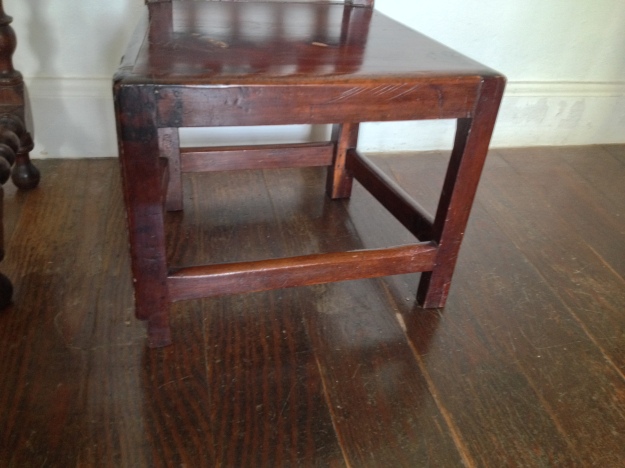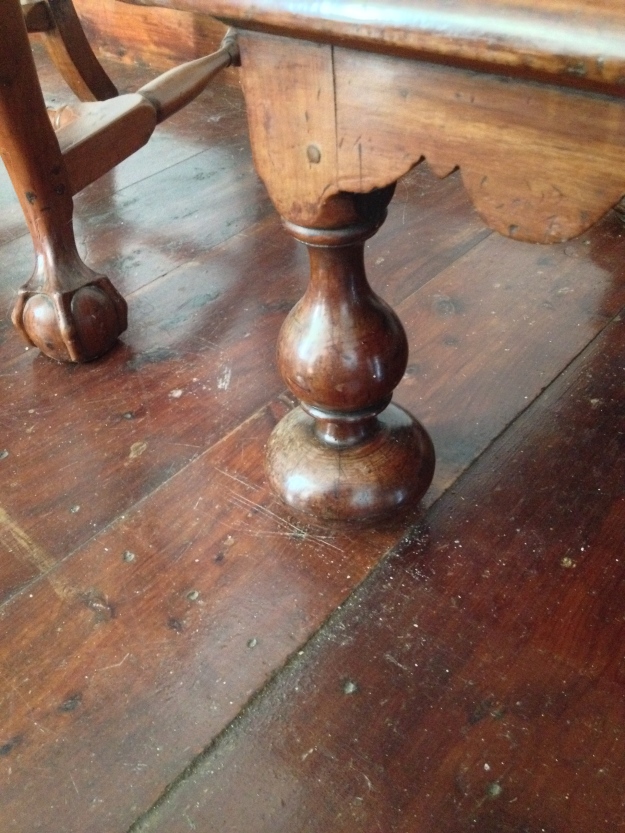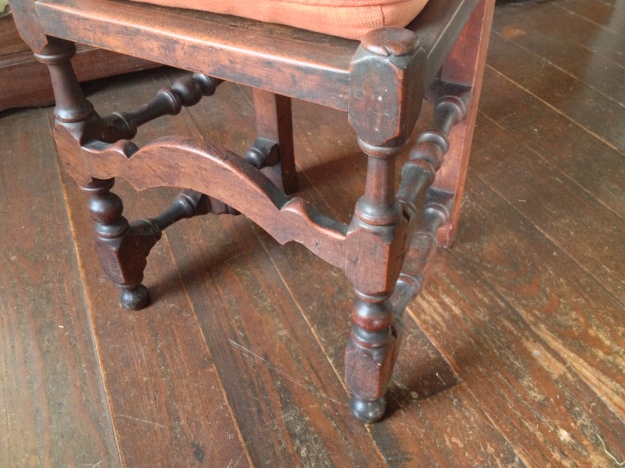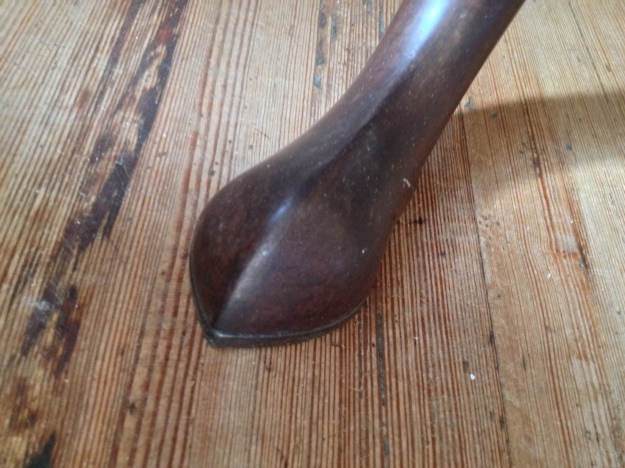You know how when you concentrate on a word or say it several times it sometimes sounds odd, as if it has become attached to the wrong meaning and you worry you have been using it inappropriately for years? Semantic satiation. I went to bed last night thinking about furniture feet, woke up thinking it too, and now the word feet seems such a strange one to apply to things on chairs. Most things with legs and feet use them for mobility, a chair is the very opposite of mobile. They should be called underpinnings with substructures.
You might have seen the one behind the onion foot is a ball-and-claw foot, but that comes later and I am going to put some chronological order into the post.

Jacobean style, a 17th century chair with unadorned stretchers between the feet. Only the masters of the household had chairs, everyone else had stools.

Simplicity of style indicates an early chair. The legs are supported by stretchers. There are no feet.
Queen Anne style overlaps, 1702-1755, more refined and with shapely legs – cabriole legs, an s-shaped curve where the bump near the seat is called a knee. They don’t sound so elegant when one learns that cabrioler is French for running like a goat. The advantage of a cabriole leg is that it doesn’t need stretchers for additional support. That makes the following image unusual -it has both a cabriole leg and stretchers.

It was common for the back legs to be simpler and undecorated while the front feet on show displayed the good craftsmanship.
Now this is where the ball-and-claw foot comes in. They appear on furniture from both Queen Anne and the later (174-1760) Georgian style.

Another ball and claw foot. The similarity with the first one might be indicate a similar origin – both are Bermudian pieces from the early 18th century.

A trifid foot, like an animal paw. These may have been influenced by Irish styles of the 18th century. They are sometimes called Drake feet.
More utilitarian furniture is influenced from Pennsylvanian Dutch style, 1720-1830, and commonly these had straight unadorned legs with no feet.
Everyone has heard of Chippendale chairs. They tend to be more ornate than Queen Anne chairs, but they share similar feet. Carving on the cabriole knee is more likely in a Chippendale.

Not sure this can really be called a foot, a bracket. The draw handles are of batwing design so from Queen Anne or Chippendale.
All pictures taken with permission in preparation of room guides for the Bermuda National Trust property, Verdmont. If you want to see the whole pieces of furniture to which these feet belong then Verdmont is open Wednesday through Friday from 10am to 4pm and is just $5 entrance fee. I am sorry that the air fare to Bermuda is a little more costly than that.














